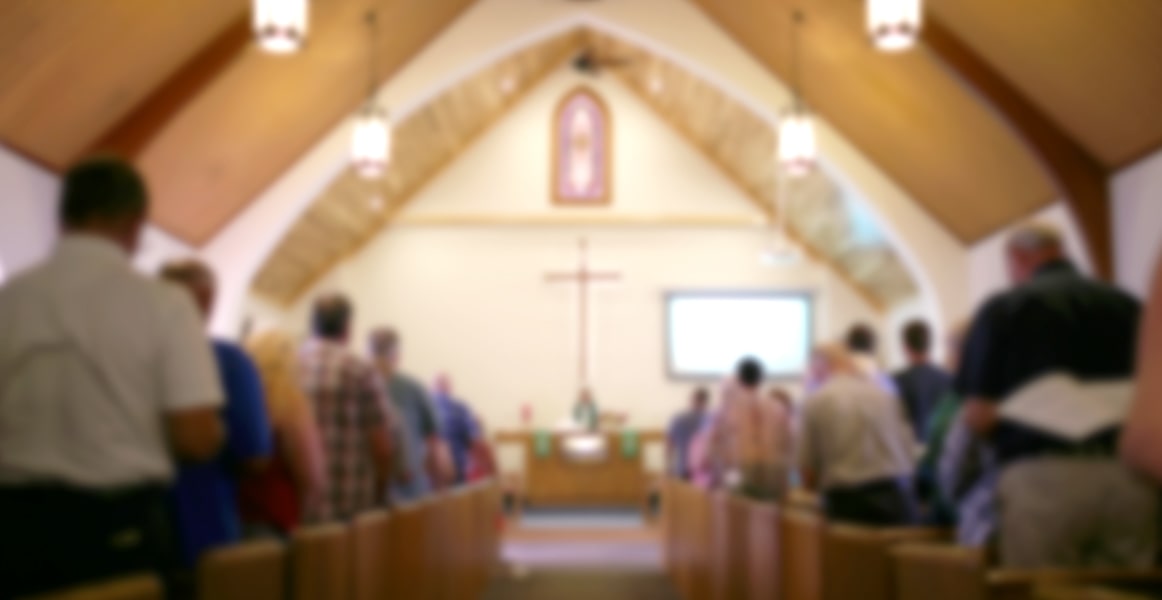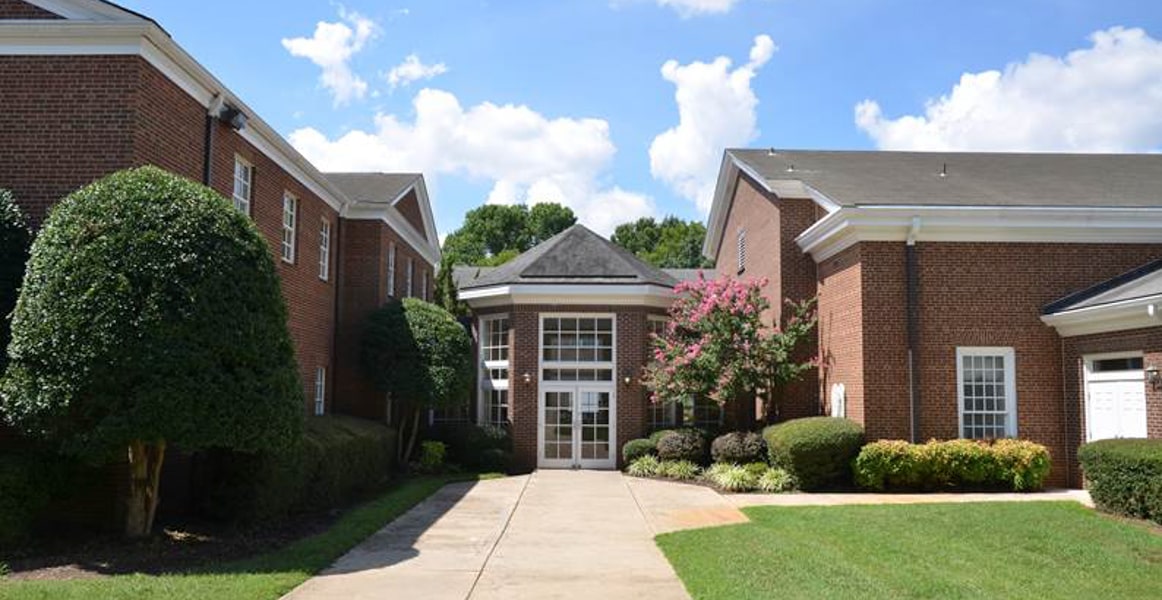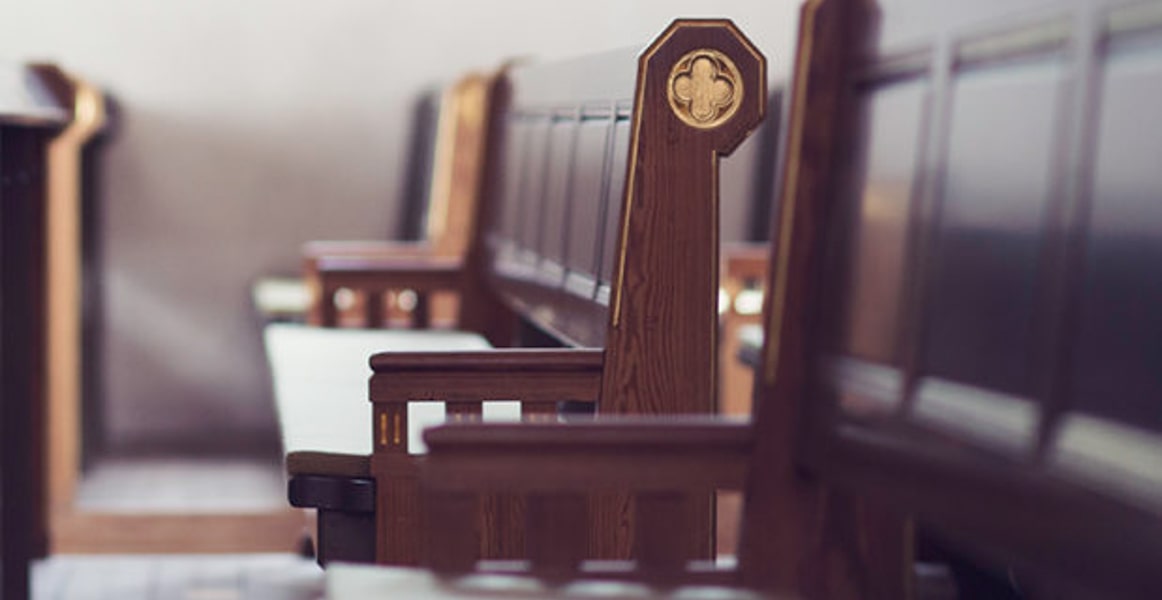A hundred years ago, most churches and synagogues in the US featured pews rather than chairs for seating the congregation. However, new churches today are most commonly furnished with rows of padded chairs, and many churches are replacing their old pews with more comfortable chairs. Stackable chairs are more comfortable and offer more flexibility in a meeting space than traditional wooden pews, which are permanently installed.
Are you wondering whether church pews or chairs are the best seating option for your church? It can depend on the demographics of your church and the physical space of the building. A few other important things to consider are portability, comfort, style, aesthetics, cost, and maintenance. Churches can even decide on a combination of chairs and benches, with bench seating in the balcony, for instance, and chair seating on the main level. It’s all a matter of preference.
Here are the pros and cons of pews and church chairs.
Why Get Church Chairs
Typically, church chairs are stackable with a metal or wooden frame and upholstered seats and backs. Chairs are seldom screwed into the floor; they are usually built to be moved around throughout the space. The exception to this would be theater seating, which is secured to the floor.
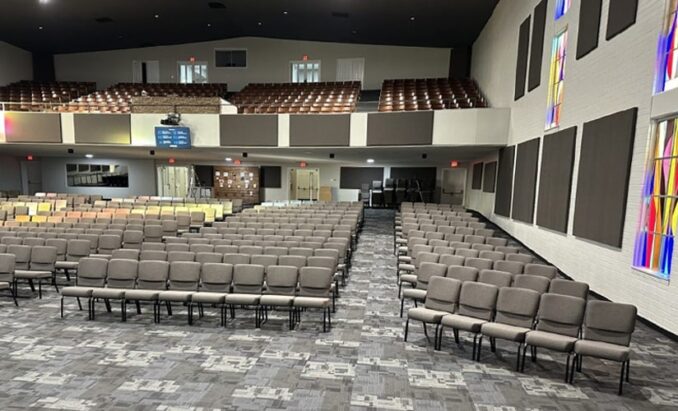
What people love about church chairs:
- Rearrange easily for multipurpose areas
- Cost less than church pews
- More comfortable than church pews
- Stackable and lightweight
- More wheelchair-friendly
Pros of church chairs
Unlike traditional pews, chairs are easy to move around, stack, and store to create more space and reconfigure a room. This flexibility is important to congregations that hold a variety of events, concerts, children’s groups, and meetings throughout the week. Additionally, chairs are less expensive than pews, which need to be custom-built to fit the space.
Church chairs are also more comfortable since they’re padded and upholstered. Some chair manufacturers offer optional armrests, which offer greater safety and support to elderly members of the congregation. You may also find you have a better church seating capacity with chairs than you do with pews. And finally, the last advantage of church chairs over pews is that it’s easy to integrate wheelchairs into the congregation area.
Cons of church chairs
Some people like to stick with tradition, and some churchgoers prefer the old-fashioned, hand-crafted, and traditional look and feel of pews. In addition, even the highest quality church chairs won’t last a century, while high-quality hardwood pews (without a cushion) can last a hundred years or more.
Why Get Church Pews
A church pew is a long bench with built-in back support. In churches and synagogues, pews are often placed one behind the other, in neat rows. Pews and benches are often considered the traditional choice for church seating in churches and synagogues, although pews weren’t used before the 1500s. Before pews were installed in houses of worship, the congregation was expected to stand during services. Sometimes a few wooden benches were provided at the back of the room for those who couldn’t stand.
Even today, pews are custom built to fit the space. They’re usually made of wood and are fixed to the floor. Cushions can be added to lessen the discomfort of sitting on a hard bench.
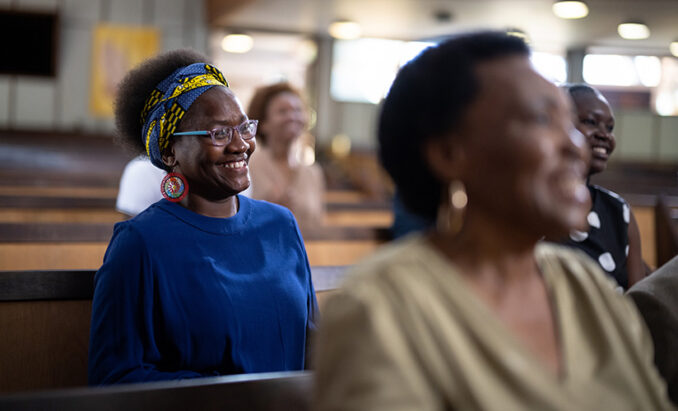
What people love about church pews
- Traditional style for churches
- Can be refinished over the years
- Nice for families with young children
Pros of church pews
Pews are often appreciated for their classic and beautiful appearance. Historic churches sometimes have elaborate pews and box pews with carvings and fine craftsmanship that have been around for centuries.
Some people (particularly those adhering to rigid or traditional religions) have a sentimental attachment to the idea of pew seating in a church. Pews feel spacious, which is compounded by the fact that people tend to sit further apart in pews than they would in chairs (which unfortunately results in more wasted space with pews). Pews can be preferable for young children who move around a lot. Pews also have a longer lifespan compared to church chairs, since they can be sanded down and refinished periodically.
Cons of church pews
Pews can have many disadvantages. To begin with, church pews are more expensive than chairs. Basic wood pews often cost 200% more than church chairs. Secondly, church pews are uncomfortable. Adding cushions does add some comfort, but there is no getting around the fact that wood pews are stiff and uncomfortable. Another disadvantage to pew seating in churches is that pews can’t be moved around to accommodate different meetings and events.
Pews also make cleaning and refinishing hardwood floors more difficult. For some, there are aesthetic disadvantages to wooden pews because there are a limited variety of colors and designs to choose from. Another difficulty is handicapped accessibility. To create space for wheelchairs, pews need to be custom-designed or cut down.
Since pews must be fixed in place and bolted to the floor by a professional, they can be expensive to install, repair, and move if the church is being remodeled. Pews also take up a lot of room for the amount of seating they provide. In addition, church pews don’t offer clearly defined personal space, which is important to younger generations. Many people don’t like to be seated so close to others and crowded onto benches, so they prefer chairs.
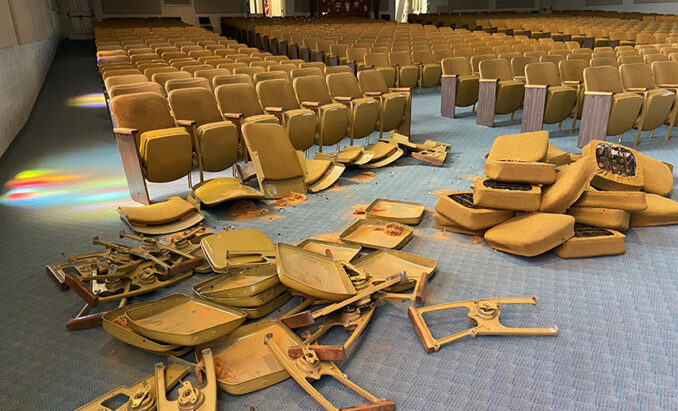
Which is better: church pews or church chairs?
To summarize, pews are a good choice for traditional churches that have an expansive budget. Adding cushions can enhance the comfort of wooden pews.
Church chairs are an excellent choice for most modern houses of worship. Church chairs are much less expensive and offer greater flexibility for churches that may wish to use the sanctuary area for other meetings or events, since they can be moved around easily. Chairs are also more comfortable than church pews, especially for individuals with back problems or mobility issues.

